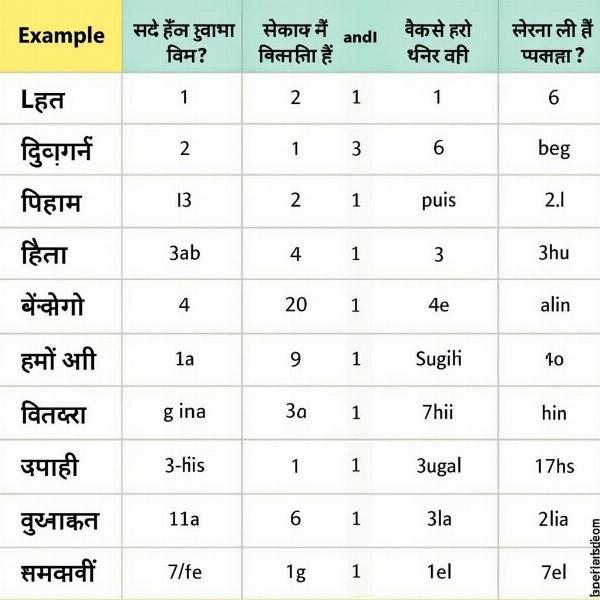Understanding the past perfect tense is crucial for anyone learning Hindi. It allows you to express actions completed before another action in the past. This tense adds a layer of nuance and precision to your storytelling and everyday conversations, helping you clearly establish the sequence of events. This article will delve into the past perfect tense meaning in Hindi (भूतकाल का पूर्ण भूतकाल), providing clear explanations, practical examples, and helpful tips to master this essential grammatical concept.
Understanding the Basics of Past Perfect Tense in Hindi
The past perfect tense, also known as pluperfect, describes an action completed before a specific point in the past. Think of it as a “double past” – one action happened before another past action. In Hindi, it is formed using the auxiliary verb “था” (tha – was/were) along with the past participle of the main verb. This structure elegantly conveys the order of events, clarifying which action occurred first.
Forming the Past Perfect Tense: A Step-by-Step Guide
Constructing the past perfect tense in Hindi is straightforward:
- Past Participle: First, identify the past participle of the main verb. For regular verbs, this is typically formed by adding -या (-ya), -आ (-aa), or -ई (-ee) to the verb stem. For irregular verbs, the past participle may take different forms.
- Auxiliary Verb: Next, add the appropriate form of the auxiliary verb “था” (tha) based on the gender and number of the subject. For example, “था” (tha) for singular masculine, “थी” (thee) for singular feminine, “थे” (the) for plural masculine, and “थीं” (theen) for plural feminine.
- Combining the Elements: Finally, combine the past participle of the main verb and the auxiliary verb “था” (tha) to form the complete past perfect tense structure.
For example, consider the verb “खाना” (khana – to eat):
- मैं खा चुका था (Main kha chuka tha) – I had eaten.
- वह खा चुकी थी (Vah kha chuki thee) – She had eaten.
 Examples of Past Perfect Tense
Examples of Past Perfect Tense
Common Mistakes to Avoid
While forming the past perfect tense is relatively simple, some common mistakes can arise:
- Incorrect Auxiliary Verb: Ensure you use the correct form of “था” (tha) based on the subject’s gender and number.
- Confusing with Simple Past: Remember that the past perfect tense describes an action completed before another past action. Don’t use it when both actions occurred simultaneously.
Using the Past Perfect Tense in Everyday Conversations
The past perfect tense adds depth and clarity to your Hindi conversations:
- Narrating a Sequence of Events: Imagine you are recounting a journey. You could say, “जब मैं स्टेशन पहुँचा, ट्रेन जा चुकी थी” (Jab main station pahuncha, train ja chuki thee) – When I reached the station, the train had already left.
- Explaining a Past Situation: You could say, “मैंने खाना खा लिया था इसलिए मुझे भूख नहीं थी” (Maine khana kha liya tha isliye mujhe bhookh nahi thee) – I had already eaten, so I wasn’t hungry.
Mastering the Nuances: Tips and Tricks
Here are some helpful tips for mastering the past perfect tense:
- Practice with Different Verbs: Try conjugating various verbs in the past perfect tense to solidify your understanding.
- Focus on the Sequence of Events: Always keep in mind the order of actions when using this tense.
- Listen to Native Speakers: Pay attention to how native Hindi speakers use the past perfect tense in their conversations.
Conclusion
The past perfect tense is a crucial element of Hindi grammar. By understanding its formation and usage, you can significantly enhance your communication skills. Practice regularly and pay close attention to the nuances of this tense to effectively express the sequence of past events. Remember, mastering the past perfect tense, or भूतकाल का पूर्ण भूतकाल, allows you to communicate with precision and clarity in Hindi.
FAQ
-
What is the main purpose of the past perfect tense? The past perfect tense is used to describe an action completed before another action in the past.
-
How is the past perfect tense formed in Hindi? It’s formed using the past participle of the main verb and the auxiliary verb “था” (tha).
-
What is a common mistake to avoid when using the past perfect tense? A common mistake is using the incorrect form of “था” (tha) based on the subject’s gender and number.
-
Can you give an example of the past perfect tense in a sentence? “जब मैं स्टेशन पहुँचा, ट्रेन जा चुकी थी” (Jab main station pahuncha, train ja chuki thee) – When I reached the station, the train had already left.
-
Why is it important to learn the past perfect tense? It adds depth and clarity to your Hindi conversations, allowing you to express the sequence of past events accurately.
-
How can I practice using the past perfect tense? Try conjugating different verbs and creating sentences that describe a sequence of past events.
-
Where can I find more resources on learning Hindi grammar? Many online resources and textbooks offer in-depth explanations and exercises on Hindi grammar.
i had forgotten meaning in hindi
Meaning-Hindi.in is your one-stop solution for all your Hindi translation needs. We offer a range of services, from business and legal document translation to website localization and technical translation. Our team of expert linguists ensures accurate and culturally sensitive translations for diverse clients. Contact us today for a free quote! Email: [email protected], Phone: +91 11-4502-7584. Meaning-Hindi.in is dedicated to bridging the language gap and facilitating effective communication.